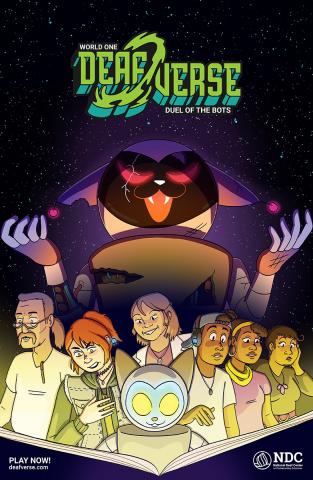Deafverse is making an impact and people are starting to notice. Currently, more than 2,500 players are learning how to navigate challenging situations, advocate for themselves, and know their rights. When beta players are included, that number jumps to over 5,000.
Most recently, the choose-your-own-adventure game for deaf teens was featured in Alcalde, the official publication of the Texas Exes — the University of Texas’s alumni organization.
“Video games have come a long way since the ’80s,” the article begins. “… But in all that time, there has never been an American Sign Language accessible video game. Until now.”
It has also been featured in The Daily Moth, KXAN and The Daily Texan.
Developed by deaf professionals, the game uses an immersive story to teach students important real-world skills.
“The player begins the game escaping from a mysterious organization who is trying to learn about the Deafverse — which is a collection of ancient, magical comic books,” said KXAN’s Alyssa Goard. “Next, the player enters these comic books, both trying to stop a rogue bot and also making choices in scenarios similar to those deaf teens would have to make in real life.”
That translation into real life is key for the game designers.
“I can become more comfortable with answering certain questions or solving certain situations or feel comfortable taking risks,” Justin Perez, the game’s narrator, told The Daily Moth. “With these new skills, we can go back to the real world where it can be tough, but you’d have the tools to recover and respond by seeking out resources, resolutions, some kind of help and numerous other resources.”
Gaming Coordinator Kent Turner expanded on that thought in his interview with The Daily Texan.
“The game teaches deaf people to know their rights,” he said. “They have a right to an interpreter (and) different accommodations in school. Some deaf students don’t know about these (accommodations), so we developed this game for deaf students to learn how to manage their lives.”
Though the game is targeted toward deaf teens, it is accessible to people with a wide range of abilities, including those who do not know American Sign Language. The game was made possible by support from the U.S. Department of Education’s Office of Special Education Programs.








